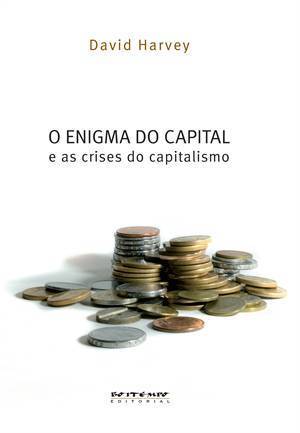What do you think?
Rate this book


240 pages, Paperback
First published January 1, 2010
The problem is that the economic theories and orthodoxies which manifestly failed to predict the crisis continue to inform our debates, dominate our thinking and underpin political action.
Mental conceptions of the world were reshaped as far as possible by appeal to neoliberal principles of individual liberty as necessarily embedded in free markets and free trade.
While there are innumerable parallels now being drawn between the crisis of the 1930s and the current one, the one potential parallel that is almost totally ignored is the collapse of international collaboration, the descent into geopolitical rivalries
Throughout much of the capitalist world, we have lived through an astonishing period in which politics has been depoliticised and commodified.
double blockage exists: the lack of an alternative vision prevents the formation of an oppositional movement, while the absence of such a movement precludes the articulation of an alternative.
The class inequalities upon which capital accumulation rests are frequently defined by identities of race, gender, ethnicity, religion
Many of the key achievements of distributive socialism in the period after 1945, in Europe and beyond, have become so socially embedded as to be immune from neoliberal assault.
Harvey’s answer was that under capitalism land becomes “a pure financial asset”; land price is a claim on future revenue treated as a present-day asset. “Mortgages,” Marx said, “are mere titles on future rent.” And Harvey completes his thought: “Land price must be realized as future rental appropriation, which rests on future labor” (our italics). The big risk, naturally, is that you will attribute to real estate far more present-day value than can later on be returned to it by labor (in the form of the portion of total income devoted to housing). A bubble occurs not when people pay for real estate with money they don’t yet have—as always happens, given the availabilty of credit—but when they pay with money they will never have, out of wages they will never receive—out of wages no one will ever receive.
http://nplusonemag.com/intellectual-situation-your-marx
In the sweatshops of the so-called developing world it is women who bear the brunt of capitalist exploitation… The capitalist has to mobilise any social relation of difference, any distinction within the social division of labour, any special cultural preference or habit, both to prevent the inevitable commonality of position in the workplace being consolidated into a movement of social solidarity and to sustain a fragmented and divided workforce.
Once technology became a business in its own right then a social need sometimes had to be created to use up the new technology rather than the other way around. In the pharmaceutical sector we see in recent times the creation of whole new diagnostics of mental and physical states to match new drugs (Prozac is the classic example).
The urbanisation of China over the last twenty years has been hugely important. Its pace picked up after a brief recession in 1997 or so, such that since 2000 China has absorbed nearly half of the world's cement supplies.
The way radical egalitarianism articulates with other spheres in the co-evolutionary process therefore complicates matters at the same time as it illuminates how capitalism works. When the individual liberty and freedom it promises is mediated through the institutional arrangements of private property and the market, as it is in both liberal theory and practice, then huge inequalities result.
Raising a child in a city neighbourhood occurs in a radically different time-space from that defined by contemporary financial operations. People reasonably seek a secure personal space--a home-- in which to live out their daily lives and to pursue their reproductive activity on, say, a twenty-year time horizon. But to do so they have to become titled property owners acquiring a mortgage in a debt market organised according to a different time-space logic.
For capital accumulation to return to 3 per cent compound growth will require a new basis for profit-making and surplus absorption. The irrational way to do this in the past has been through the destruction of the achievements of preceding eras by way of war, the devaluation of assets, the degradation of productive capacity, abandonment and other forms of "creative destruction."
The rebound in stock market values… is a good sign, we are told, even as unemployment pretty much everywhere continues to rise. But notice the class bias in that measure. We are enjoined to rejoice in the rebound in stock values for the capitalists because it always precedes, it is said, a rebound in the "real economy" where jobs for the workers are created and incomes earned. The fact that the last stock rebound in the United States after 2002 turned out to be a "jobless recovery" appears to have been forgotten already.